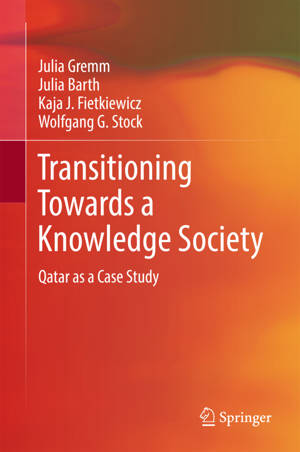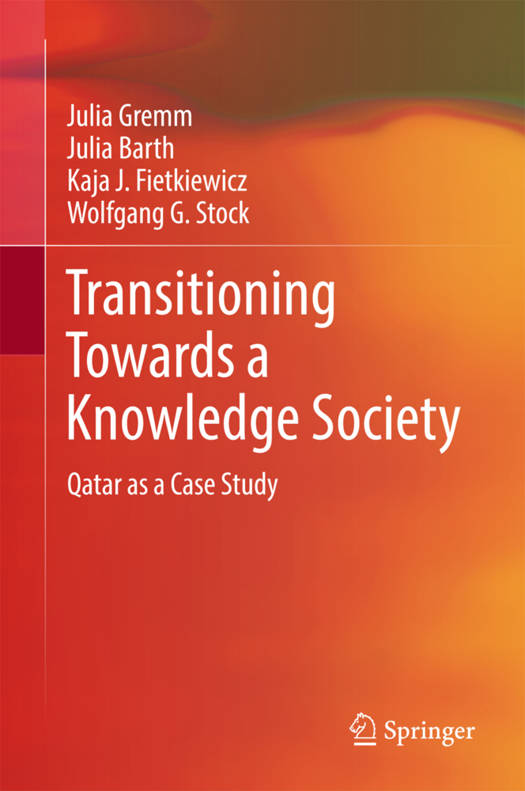
- Retrait gratuit dans votre magasin Club
- 7.000.000 titres dans notre catalogue
- Payer en toute sécurité
- Toujours un magasin près de chez vous
- Retrait gratuit dans votre magasin Club
- 7.000.0000 titres dans notre catalogue
- Payer en toute sécurité
- Toujours un magasin près de chez vous
Transitioning Towards a Knowledge Society
Qatar as a Case Study
Julia Gremm, Julia Barth, Kaja J Fietkiewicz, Wolfgang G Stock
Livre relié | Anglais
94,95 €
+ 189 points
Format
Description
The book offers a critical evaluation of Qatar's path from oil- and gas-based industries to a knowledge-based economy. This book gives basic information about the region and the country, including the geographic and demographic data, the culture, the politics and the economy, the health care conditions and the education system. It introduces the concepts of knowledge society and knowledge-based development and adds factual details about Qatar by interpreting indicators of the development status. Subsequently, the research methods that underlie the study are described, which offers information on the eGovernment study analyzing the government-citizen relationship, higher education institutions and systems, its students and the students' way into the labor market. This book has an audience with economists, sociologists, political scientists, geographers, information scientists and other researchers on the knowledge society, but also all researchers and practitioners interested in the Arab Oil States and their future.
Spécifications
Parties prenantes
- Auteur(s) :
- Editeur:
Contenu
- Nombre de pages :
- 244
- Langue:
- Anglais
Caractéristiques
- EAN:
- 9783319711942
- Date de parution :
- 21-12-17
- Format:
- Livre relié
- Format numérique:
- Genaaid
- Dimensions :
- 156 mm x 234 mm
- Poids :
- 544 g

Les avis
Nous publions uniquement les avis qui respectent les conditions requises. Consultez nos conditions pour les avis.






